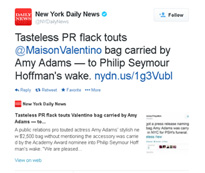Big Data has become an obsession for businesses large and small. And why not? The technology, speed, volume and variety allow unprecedented and immediate access to customer insights and behaviors, allowing you to switch gears at the drop of a dime. But if you are making decisions based on data alone, you are in need of an intervention, for the beauty of data is all about striking a balance between information and intuition.
In his blog, Kaan Turnali, a business intelligence expert for SAP’s Global Customer Operations (GCO) Reporting & Analytics Platform and an adjunct professor at Wilmington University, provides a number of reasons why more data is not a guarantee for better decisions. Here are a few highlights:
Data Is the Raw Material for Better-Informed Decisions—Not Necessarily Better Decisions
The concept of “better-informed” decisions is distinctly different than the concept of “better” decisions. Better-informed leaders don’t always make better decisions, but better decisions almost always start with better-informed leaders. …History is filled with examples of leaders making “bad” decisions even in light of ample amounts of data to support the decision-making process.
When It Comes to Data, Quality Comes Before Quantity
We seem to take quality for granted. …It’s true that as quantity increases we can achieve greater depth and perspective. But by the same token, data for the sake of data doesn’t help us either. Data quality (a field on its own) is fundamental for driving consistency and relevancy when it comes to making better-informed decisions.
Technology Alone Can’t Deliver Better Decisions
Coupled with the right technology, design, and implementation, analytics platforms can deliver on all three pillars of business intelligence: insight into the right data, for the right role, and at the right time. …But technology alone won’t guarantee a successful outcome. Our teams’ talent plays a more pivotal role. Their passion, regardless of the challenges they face or the resources available to them, will be the determining factor.
If It Can’t Be Trusted, People Won’t Use It
Untrustworthy data is a frustration that’s prevalent in small, mid-size, and Fortune 500 businesses. The issues that arise from a lack of trust in data are not just limited to leadership roles but affect everyone in the enterprise regardless of their roles or position. …The journey to promoting a culture of data-driven decision makers must start with making data quality a top priority for key data assets and decision engines. Above all, it demands a mindset to see data as a strategic asset. When the data quality is consistently excellent, then it becomes trustworthy.
More Data Is Useless if We Aren’t Asking the Right Questions
Having all the data and more of it doesn’t do much good if we aren’t asking the right business questions or simply don’t understand our assumptions. And most important is critical thinking—a skill we must demand in business.
Each of the …reasons I’ve covered prove one key point—more data should be guarded with a healthy dose of skepticism.
Read 5 Reasons Why More Data Doesn’t Guarantee Better Decisions and 5 More Reasons Why More Data Doesn’t Guarantee Better Decisions.
In an article posted on data-driven-marketing.net, we picked up this piece of good advice:
You don’t go from data to decisions and actions. You have data -> information -> insights -> decisions/actions -> business value.
Do you allow data to drive your decision-making? Feel free to share your thoughts in the comments section of this post and tune in to the live episode (9-17-14, 1pm ET) of The Marketing Mojo Show to discuss your big data dilemmas with Nancy L. Hohns, author of the LGK white paper, In the Thick of It: Big Data versus Gut Instinct. Download your complimentary copy here and read our previous posts on big data.
- A Mindset to Maximize Your Small Business Approach to Big Data
- Small Business Primer for Success in the Era of Data Democracy
- The Uncertainty of Big Data – Guidance for Small Businesses
For daily marketing communications news, subscribe to LGK’s free, online, MarCom Digest.














